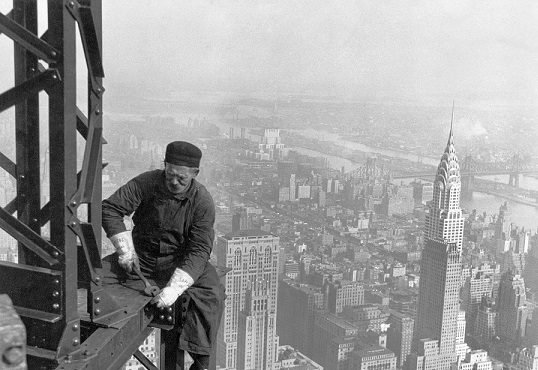According to statistics published by the Health & Safety Executive, approximately 26% of UK workplace fatalities in 2018 came as a result of falling from height.
That sobering statistic highlights just how dangerous working at height can be and, moreover, just how important it is to take the correct precautions before engaging in such activities.
If working at height is a big part of your job, keep yourself and others protected by being mindful of the risks involved.
Here’s a rundown of some of the most important things to consider when working at height.

Take Note of Legislation
Laws are implemented for a reason, so it’s important to take note of the relevant legislation. When it comes to working at height, this point is extremely important.
Make sure that you fully understand what applies to you and take the appropriate actions to adhere to these rulings at all times.
For workers, knowing and following these guidelines can help ensure that the working conditions are safe and risks are kept to a minimum.
Meanwhile, for employers, it can also help ensure all actions are done by the book, protecting the workers while also protecting the company from liability claims in the event of an accident.
Assess the Risks
Like any potentially dangerous situation, a comprehensive risk assessment is vital in preparing for the task at hand and can help highlight any areas of concern.
Conducting a thorough risk assessment can not only allow you to minimise the dangers but also potentially allow you to eliminate them altogether.
Should the risks be unavoidable, the identification of these dangers allows for preventative measures to be put in place, such as a fall arrest or fall restraint system.
Knowledge is Power
It’s the employer’s responsibility to provide the worker with the relevant training for the task at hand. This point is included in the Health and Safety at Work Act 1974 and is naturally extremely important to take into consideration.
Suitable training can prepare workers for the proposed job and allow them to carry them out safely. Only those that have the relevant level of experience and training should be authorised to carry out the corresponding task.
Prepare for the Worst
While every step should be taken to avoid a devastating accident, failure to prepare for the worst is not only foolish and short-sighted but also potentially very dangerous.
Be sure to formulate and implement an appropriate rescue plan to keep all parties covered in the event of an unfortunate mishap. This includes supplying the appropriate emergency rescue equipment.
Which leads us nicely to our next point…
Come Equipped
In order to ensure you are completely protected in the event of a fall, it’s vital that the correct equipment is used at all times. Often referred to as PPE (Personal Protection Equipment), this is the last resort standing between you and the ground in the event of a worst-case scenario.
It’s important to remember that not all fall protection equipment is universal and some protection measures will be more appropriate for a specific job than others. For more information on the different kinds of safety restraints, check out our blog on overhead and horizontal safety lines.
In addition to supplying equipment for working at height, we also provide inspection and certification of such equipment. For advice and guidance on what equipment may be best for you, get in touch today to speak with one of your specialist advisors.
For more information on precautions for working at height and general safety measures for height work, why not drop us a line today?
Get in Touch

